Unit 6 Biology Study Guide
11/21/21: This page is nevertheless (slightly) under evolution
Tabular array of contents
-
Sequencing: Why Unit 6 comes before Unit v
-
Weeks 16 (and 17): Dna Construction and Replication (and starting transcription/translation).
-
Week 17: Transcription, Translation
-
Calendar week 18: Mutation, Viruses, Bacterial Genetics/Operons
-
Week 19: Biotechnology
-
Week xx: Eukaryotic Gene Regulation and Animal Evolution
-
Summative Activities for Unit 6
A notation about sequencing: Why Do Unit 6 before Unit v
In our program at Berkeley High School, nosotros have our students do the Amgen Biotechnology Feel Program. This is a fabulous serial of biotechnology labs. Amgen volition transport all the hardware and consumables to your school. To participate, teachers accept to complete a free training, offered several times throughout the twelvemonth. Y'all can learn more at the Amgen Biotechnology Experience website.
For a variety of reasons, nosotros have to do this program during the first few weeks of January. And because of that, we practice Unit 6 (Gene Expression) before Unit 5 (Genetics).
While that's a very practical reason why we do Unit half-dozen before Unit of measurement 5, there are good pedagogical reasons why yous might desire to follow this sequence too.
Offset, the College Board's Course and Exam Clarification (mostly) follows a small to large sequence. Unit 1 is molecules, Unit 2 is cells. Unit 3 is energetics, but at a cellular level (enzymes, photosynthesis, and respiration). Unit 4 is also more often than not cell biology: jail cell communication and cell partition, with feedback and homeostasis (topic 4.5) sandwiched in betwixt. To me, information technology makes much more sense to stay at the cellular/molecular level, which is what Unit 6 addresses, before moving onto the organismal level, which is what most of Unit 5 (Heredity), is most. On top of that, it seems like information technology makes much more than sense for our students to understandwhat genes are and how they work (all covered in unit six) earlier looking at how genes are transmitted from generation to generation and how they're recombined (in Unit 5).
2d, in terms of moving forrad, it makes sense to move from Mendelian Genetics (which is in unit 5) to Population Genetics (which is what kicks off unit 7).
In any case, Larn-Biological science.com will back up you and your students in whatever sequence you lot're following.
Weeks 16 and part of 17: Deoxyribonucleic acid Construction and Replication; Transcription and Translation
Note that didactics well-nigh DNA, DNA Replication, Transcription, and Translation will take more than one week…For the sake of continuity, I'k presenting this together. Nosotros'll finish transcription and translation in week 17.
3 Days of Instruction to start Unit 6 (details follow).
Why 3 Days? I'm still finishing Unit 4. So i day to review (using
Solar day 1: Do this inductive introduction to the discovery of DNA.
Day 2: Testify The DNA Double Helix. After that, you can either get over the discovery of DNA with your students, or accept them kickoff tonight's homework: Dna: An Overview (Tutorial) and Deoxyribonucleic acid Structure (Tutorial)
Day three: Show Deoxyribonucleic acid, Fantastic! to review DNA's Construction. Then do HHMI'southward Dna Replication: Pulse Chase Primer Experiment. Assign Dna replication for HW
Deoxyribonucleic acid Construction and Replication Learning Objectives
According to the College Board (in their 2019 CED, available in condensed class hither), hither'southward what you should be covering in relationship to Deoxyribonucleic acid structure and replication. The CB'due south objectives are expansive. What'southward below is my summary.
- Topic half-dozen.1: DNA structure
- Deoxyribonucleic acid is the molecule of heredity in most living systems. RNA tin can play that office in viruses
- Prokaryotes have circular chromosomes. Eukaryotes have linear chromosomes. Prokaryotes also accept plasmids
- Base pairing rules: A west/ T; Thou w/ C. In RNA, A due west/ U
- Topic 6.2: Dna Replication
- DNA replication occurs in a 5' to 3' management (with new nucleotides added at the three′ terminate.
- The process is semi-conservative
- The process involves a team of enzymes: Helicase, topoisomerase, Dna polymerase, ligase are involved
- Replication happens differently between the leading strand and lagging strand.
Here'southward how to teach this fabric.
Start with some discovery learning about the structure of Dna
As an entry way into Deoxyribonucleic acid structure, I similar to do an activity about how the construction of Deoxyribonucleic acid was discovered. To do that, I utilise an this activity: Discovering the Structure of Deoxyribonucleic acid. This activeness presents the "clues" that were uncovered in the 1800s and 1900s that eventually enabled Watson and Crick to develop their double helix model of DNA. After each inkling, students draw inferences. At the terminate of the activity, students tin use this Deoxyribonucleic acid Model Construction Kit (a Google Slideshow) to create their own model of DNA. If you're in person with your students, you tin can honour "Nobel Prizes" to any group that gets their model right. My Nobel Prize was a gold star. If your students are like mine, you can get an AP Bio student to work pretty difficult for a gold star.
The action takes near an hour, and it'due south designed for students to do in groups. The Google Docs version works very well in a breakout room. If you're able to fo the paper version, make the model pieces on cardstock, and save each group'due south cut outs (so you can save time adjacent yr).
Deoxyribonucleic acid Structure and Replication Tutorials
Post-obit that, you tin can send your students to learn-biological science.com for these iii tutorials:
1. DNA: An Overview
2. Dna Construction
3. Deoxyribonucleic acid Replication
which are accompanied by this pupil learning guide
The overview volition give your students mastery of diagrams like this:
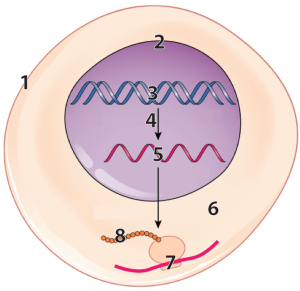
and related concepts: replication, transcription, and translation.
The second tutorial will enable your students to explicate the structure of Dna, both at a big picture level like this:

and as well like this:
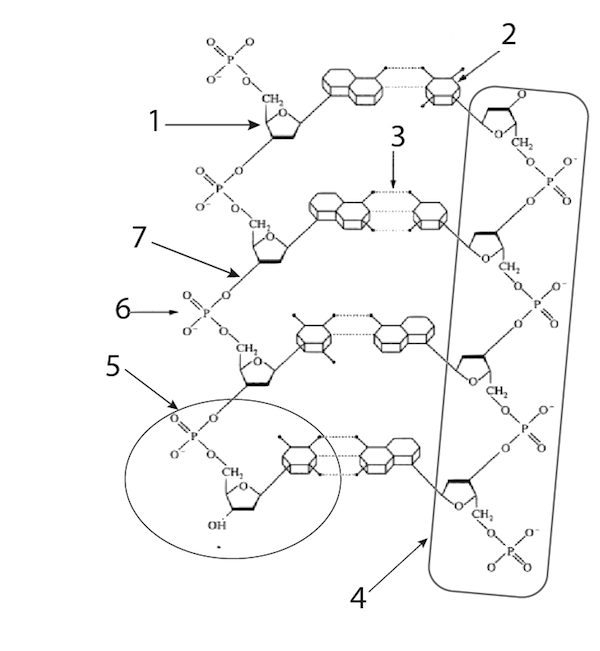
Concepts similar base of operations pairing rules, nucleotide construction, hydrogen bonding, are all covered. Note that at this point in the course, I don't say much well-nigh plasmids, but I practise cover them in 2 other places: my module about bacterial genetics and operons, and in this tutorial near genetic applied science.
In my DNA replication tutorial, students learn about replication on a big picture level, then in a style that covers all of the required enzymes (excepting topoisomerase, so don't forget to mention that to your students). By the finish of the tutorial, your students will exist able to talk their way through diagrams like this, explaining all the relevant enzymes.
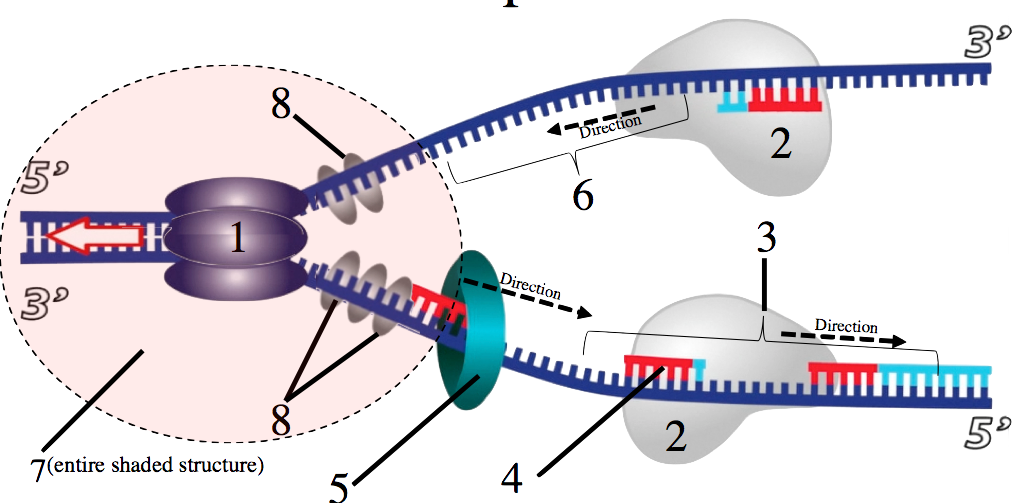
They'll also have mastery of this ane, contrasting the leading and lagging strands.
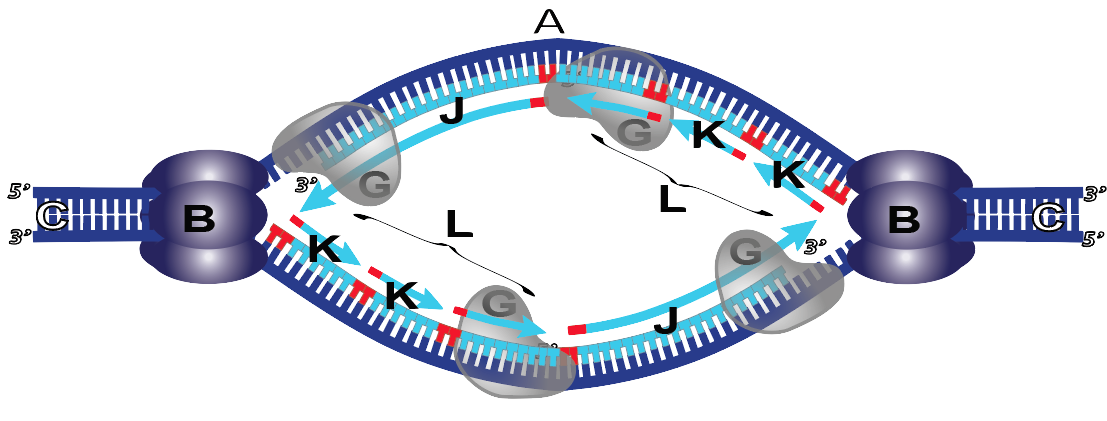
Other Resource
Here's a few other activities/resources for teaching DNA Structure and Replication
- Pulse hunt primer experiment (AKA Meselson-Stahl Experiment) HHMI. This is a fantastic way to walk your students though what has been called the "about beautiful experiment in biology." One time you exercise this, your students volition understand both what the semiconservative model of DNA replication is, and how it was verified.
- HHMI's DNA Replication Calculator Animation (run across # 6 on my tutorial), or here on youtube. Afterwards you go over my tutorial with your students, y'all should show this much more detailed calculator animation.
- Music Videos
- Deoxyribonucleic acid, Fantastic! This is my music video that explains Dna structure. It was my first ever rap song, and my first collaboration with my music producer, Max Cowan.
- DNA Replication: This music video explains the entire replication process, hit almost every enzyme. It'due south all done to a salsa beat, and the animations are very useful.
- DNA Replication Diagrams. This has pretty much every diagram of my website in a form that you can use to review with your students.
Transcription and Translation: The Big Picture
When yous're teaching processes like transcription and translation, it'southward piece of cake to get lost in the details. And so what's of import? Let's look at transcription and and translation from the perspective of biology'southward 4 big ideas.
EVOLUTION: Transcription and translation are how changes in genotype by mutation or recombination manifest themselves as new phenotypes, which and then get acted upon by natural pick. In these pandemic times, it's hard not to think of how viruses in the coronavirus family were randomly mutating and recombining, until a viral RNA sequence arose that coded for a fasten protein that was particularly adept at binding with the ACE poly peptide on the surface of epithelial cells in the human respiratory system. That was what made the spillover from bats to humans possible. It'southward painful to think of this as an example of a successful phenotype, but that'south exactly what it is.
To go broader, this connection between data in nucleic acids and action in proteins is what life itself is all about. Years ago I was lucky enough to attend a lecture by Richard Dawkins in San Francisco. Dawkins was asked what life on other planets would be like. His response: some kind of genetic system for storing and transmitting information from cell to jail cell and from generation to generation. On Earth, that'due south DNA. There would also be some system for manifesting this genetic information equally an action system that would replicate those genes. On Earth, that's to some extent RNA (which tin itself exist catalytic) only more often than not it'southward the protein that RNA codes for. On other planets, both systems could be chemically very different from what nosotros take on Earth, merely both will have to be at that place in some form.
Information FLOW:The flow of information in living things is what transcription and translation are all about. In terms of information, we see the cardinal dogma at piece of work. Information in a DNA template strand flowing to pre-mRNA in a eukaryotic nucleus, and so flowing into the cytoplasm where ribosomes translate that bulletin into poly peptide. DNA triplets get mRNA codons, which become sequences of amino acids. To take this a step beyond the central dogma, this primary construction (the polypeptide sequence) has data to specify a specific 3D shape (which programs like Deep Mind can now predict).
Data flowing inward to organisms, tissues, or cells tin impact the outward menstruum of information. To brand this connection to your students, you can talk nigh how hormones similar estrogen, testosterone, and growth hormone bind with cytoplasmic receptors, which and then diffuse into the nucleus activating transcription. This is a topic that we'll embrace presently when nosotros wait at operons, eukaryotic gene regulation and evolution.
Free energy Menses: The synthesis of RNA sequences in mRNA, tRNA, and rRNA from RNA nucleotides is a large uphill push confronting entropy, and information technology doesn't happen spontaneously. This endergonic reaction gain because RNA nucleotides come in to the nucleus as triphosphate nucleotides (similar ATP). RNA polymerases use the free energy in those phosphates to synthesize strands of RNA. Similarly, a lot of ATP is required to power the formation of peptide bonds during protein synthesis. To help students make some connections that they might not brand on their own, it's a good idea to remind your students that this free energy tin can be traced dorsum to cellular respiration, powered by glucose (and other fuels), ultimately powered by the sun.
SYSTEMS: Transcription of RNA and protein synthesis are both processes that are securely embedded in the structure of cells. Simply the system tin be simplified to runin vitro,which you lot tin read about here on Wikipedia. These jail cell-gratis systems are non new: Marshall Nirenberg used such a system to decipher the genetic code.
Transcription and Translation Learning Objectives
According to the College Board (in their 2019 CED, available in condensed form here), here's what you should be covering in relationship to transcription and translation . What's below is a lightly edited summary of the CB's original objectives.
TOPIC six.3: Transcription
- Describe how genetic information flows from DNA to RNA to protein.
- Explicate how the sequence of RNA bases, together with the structure of the RNA molecule, determines RNA role—
- mRNA molecules carry information from Deoxyribonucleic acid to the ribosome.
- Singled-out tRNA molecules bind specific amino acids and have anticodon sequences that base pair with the mRNA. tRNA is recruited to the ribosome during translation to generate the primary peptide sequence based on the mRNA sequence.
- rRNA molecules are functional edifice blocks of ribosomes.
- Genetic data flows from a sequence of nucleotides in DNA to a sequence of bases in an mRNA molecule to a sequence of amino acids in a protein.
- RNA polymerases employ a single template strand of Deoxyribonucleic acid to direct the inclusion of bases in the newly formed RNA molecule. This process is known as transcription
- The Deoxyribonucleic acid strand acting as the template strand is also referred to as the noncoding strand, minus strand, or antisense strand. Selection of which Deoxyribonucleic acid strand serves as the template strand depends on the gene being transcribed.
- The enzyme RNA polymerase synthesizes mRNA molecules in the 5' to 3' direction by reading the template Dna strand in the iii' to v' direction.
- In eukaryotic cells the mRNA transcript undergoes a series of enzyme-regulated modifications—
- a. Addition of a poly-A tail.
- b. Addition of a GTP cap.
- c. Excision of introns and splicing and retention of exons.
- d. Excision of introns and splicing and retentivity of exons can generate unlike versions of the resulting mRNA molecule; this is known as alternative splicing.
- Explicate how the sequence of RNA bases, together with the structure of the RNA molecule, determines RNA role—
TOPIC vi.4: Translation
- LO IST-i.O: Draw how the phenotype of an organism is determined by its genotype.
- Translation of the mRNA to generate a polypeptide occurs on ribosomes that are nowadays in the cytoplasm of both prokaryotic and eukaryotic cells and on the rough endoplasmic reticulum of eukaryotic cells.
- In prokaryotic organisms, translation of the mRNA molecule occurs while it is beingness transcribed.
- Translation involves free energy and many sequential steps, including initiation, elongation, and termination.
- Exclusion: the details and names of enzymes and factors is outside of telescopic.
- The salient features of translation include—
- Translation is initiated when the rRNA in the ribosome interacts with the mRNA at the start codon.
- The sequence of nucleotides on the mRNA is read in triplets called codons.
- Each codon encodes a specific amino acrid, which tin can be deduced by using a genetic code nautical chart. Many amino acids are encoded by more than than ane codon.
- About all living organisms use the same genetic code, which is testify for the common ancestry of all living organisms.
- tRNA brings the correct amino acrid to the correct identify specified by the codon on the mRNA.
- The amino acrid is transferred to the growing polypeptide chain.
- The process continues forth the mRNA until a finish codon is reached.
- The process terminates by release of the newly synthesized polypeptide/protein.
- EXCLUSION: don't memorize the genetic code
- Genetic data in retroviruses is a special instance and has an alternate menstruation of data: from RNA to DNA, made possible by reverse transcriptase, an enzyme that copies the viral RNA genome into Dna. This DNA integrates into the host genome and becomes transcribed and translated for the assembly of new viral progeny.
- Exclusion: encounter Deoxyribonucleic acid exclusion higher up
On Acquire-Biology.com, nosotros cover everything listed above in the tutorials beneath, with two exceptions: processing of eukaryotic RNA, and retroviruses. That's considering these topics are covered in two modules that I'll talk most beneath: Eukaryotic factor regulation and Viruses.
Interactive Tutorials
Learn-Biological science.com covers transcription and translation through four tutorials.
1. Transcription
2. The Genetic Code
three. Translation/Poly peptide Synthesis
4. Protein Targeting to the Rough ER
These are accompanied by this student learning guide.
The first tutorial starts by teaching the differences between DNA and RNA, and the slightly different base pairing rules (A pairs with U, not T). Students acquire the basics of transcription, and will exist able to explicate diagrams similar the ane below.

In the second tutorial, students learn how to employ a genetic code dictionary:
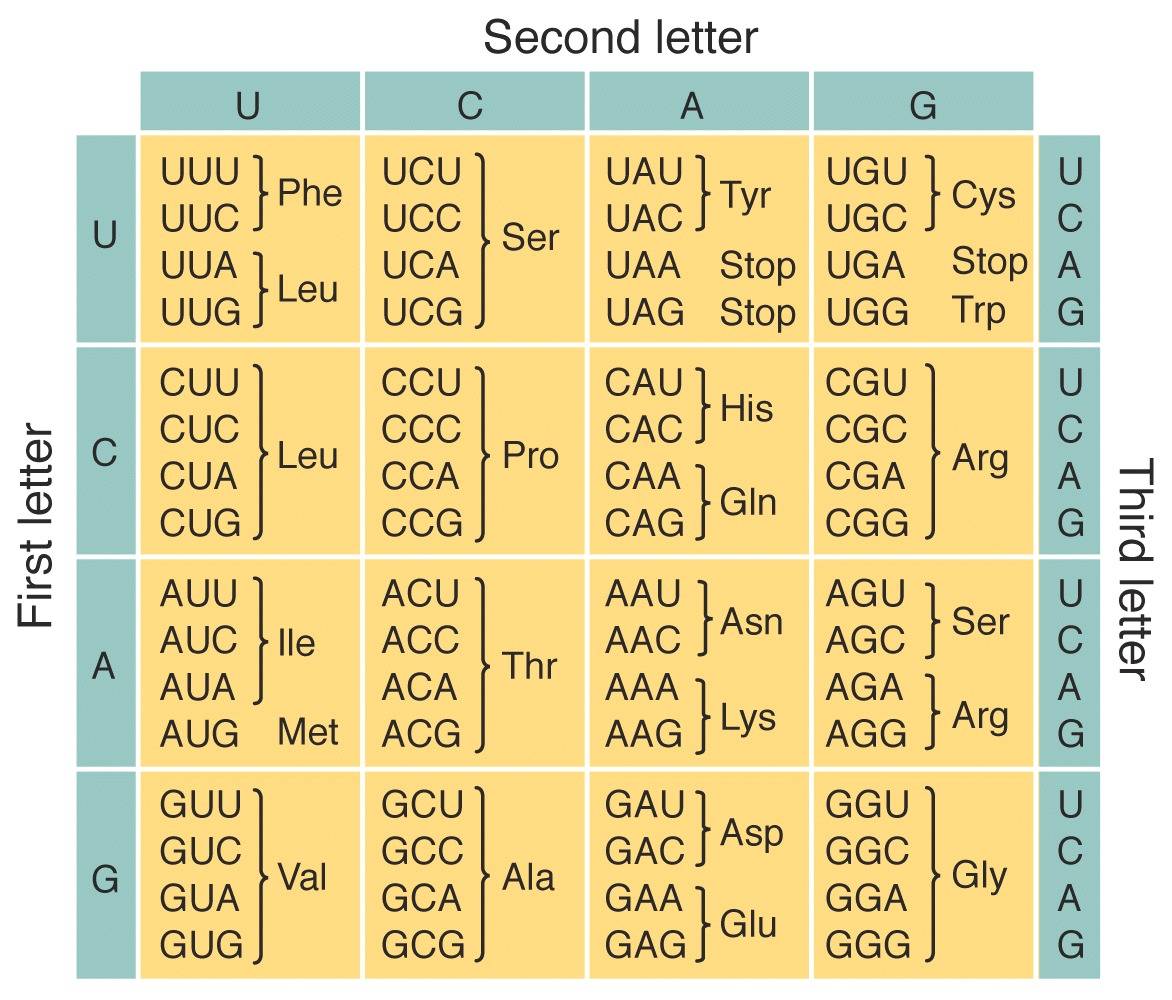
The third tutorial works through the entire process of protein synthesis, guiding your students through the various RNAs involved, and through diagrams like this:
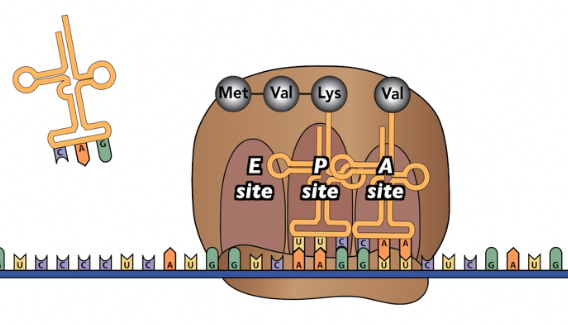
The last tutorial in this sequence goes outside of the standards to teach nigh protein targeting. The underlying question here is how to ribosomes "know" whether to assemble their proteins freely in the cytoplasm, or every bit bound ribosomes fastened to the Rough Due east.R. You lot can skip this if you lot're pressed for time, but for me, this is a super-important feature of how cells work (and it only takes a few minutes).
Other Resources
Here's a few other activities/resource for teaching transcription and translation:
- Of all the music videos I've made, my Protein Synthesis Vocal is one of my personal favorites. It explains the whole procedure, and has a great sing along chorus. While I'g not a big fan of Heavy Metal, this vocal comes pretty close. Y'all can view information technology here on learn-biology.com
- Flinn has two fantabulous POGILs on transcription and translation. They're entitled "Gene Expression—Transcription": and "Gene Expression—Translation."
- Here's a link to a guided lecture notation taking sheet. It has a a lot of practice exercises about transcription, translation, using the genetic lawmaking that you can use to check for understanding and for generating mastery.
Week 17: Finishing Transcription and Translation; Mutation, and Viruses
Permit's take stock of where we are within Unit 6. If you're post-obit this scope and sequence, then within a twenty-four hour period or two you'll be washed with transcription and translation (topics 6.iii and 6. 4 in the Higher Board'due south Form and Exam Description). What'due south side by side in that outline is
- Topic 6.5: Regulation of Gene Expression.
- Topic vi.6: Gene Expression and Prison cell Specialization
- Topic 6.7: Mutations
- Topic 6.8: Biotechnology
Yous certainly could become in that direction (and Acquire-Biology will back up you in doing and then), merely I advise that you do the following:
- Topic 6.seven: Mutation
- Viruses (besides half-dozen.7, but come across the notes below about viruses in the AP Curriculum)
- Bacterial Genetics and Operons (1st part of gene regulation, topic 6.vi)
- Biotechnology (topic half-dozen.viii)
- Eukaryotic Gene Regulation and Development
Part of the reason why I follow that sequence is because it fits with my curriculum. At BHS, nosotros've all been trained in the AMGEN Biotechnology feel, and nosotros practise a big biotechnology unit of measurement after Wintertime Suspension. To understand these labs (and labs like BioRad' pGLO lab), students need to know how operons work. That's because a cardinal concept in the lab involves not just inserting a cistron-bearing plasmid into bacterial cells, but also inducing gene expression through a organisation that, functionally, operates but like the lac operon.
In what's beneath, I'll walk you through Mutations and Viruses. Call up that you might have to spend a day or two this week finishing up transcription and translation. That'south fine. three days is plenty to teach mutation and viruses.
three Days of didactics for Week 17
Why three days? I'yard in finals week. Simply I'm not giving a final, because information technology doesn't make sense to give up a calendar week of educational activity to review semester 1. Instead, my advice is to salve that fourth dimension for reviewing in Apr, and cover material now. So, at my loftier school, I take two regular days of didactics, then a ii hour finals cake. I'm going to use that time for journal read-arounds, a flake of makeup time on Learn-Biology.com, and and then a lesson virtually translation/protein synthesis.
Mean solar day 1: Consolidate DNA replication using this handout. Assign Transcription for HW.
Day 2: Consolidate transcription and move into translation using this handout.
Day three: Cease translation (meet handout for day two).
Calendar week 18: Mutation, Viruses, Operons
The goal is to cover three topics this week, supported by the following Larn-Biological science.com tutorials and pupil learning guides. In addition, in the twenty-four hour period past day instructions below you'll find boosted handouts.
- Mutations, supported past this Mutation Student Learning Guide
- Viruses, supported past this Viruses Student Learning Guide
- Bacterial Genetics and Operons, supported by this student learning guide.
Hither'south how yous'll do this in 5 days of didactics
Mean solar day 1: Introduce Mutations through the Mutations POGIL. Assign the mutations tutorial for homework.
Twenty-four hours 2: Innovate Viruses, using this handout: Assign the first module in viruses for homework.
Day 3: Consolidate learning about viral life cycles. Innovate SARS-CoV-two and COVID-19. Assign the COVID-19 tutorial for homework.
24-hour interval 4: Brief lesson on Antigen Rapid Exam. Assign the Tutorial on Rapid Antigen Testing for Homework.
Day 5: Teach virtually Operons, using this handout. Assign operons tutorial for homework.
Mutation Learning objectives
If you desire a look at the Higher Board'south Objectives for Mutations in my condensed outline, become hither. What'due south below renders these into a more than student (and teacher) friendly class.
- Define Mutation
- Using sickle cell anemia as an illustrative example, explicate how mutations can cause changes in phenotype
- Compare and contrast somatic and germ line mutations: where they occur, and what their consequences are.
- Depict diverse types of point mutations
- silent
- missense
- not-sense
- insertions and deletion errors leading to a frameshift.
- Explicate how mutations come about.
- Explicate how mutations can be harmful, beneficial, or neutral.
- Be able to explicate specific examples of mutations.
- sickle cell (mentioned above)
- Mutations in the CFTR gene in relationship to cystic fibrosis
- Mutations in MC1R and adaptive melanism in the stone pocket mouse.
- Explicate the overall importance of mutation to evolution.
Notation: Chromosomal mutations related to non-disjunction are covered in this tutorial in Unit 5. We encompass phenomena like the evolution of antibody and pesticide resistance in this tutorial in our Evidence for Development Module.
Mutation Tutorial on Acquire-Biology.com
You can help your students main all of the higher up at our Mutation Tutorial.
Other Mutation-Related Learning Resources
Along with our tutorial, Flinn's Genetic Mutations POGIL volition help your solidify your student'south understanding.
Teaching about Viruses
The word "virus" only shows up in two places in the Course and Exam Description. It shows upwards in topic 6.4 in the context of contrary transcriptase.
Genetic information in retroviruses is a special case and has an alternate menstruation of information: from RNA to Deoxyribonucleic acid, fabricated possible by reverse transcriptase, an enzyme that copies the viral RNA genome into DNA. This Deoxyribonucleic acid integrates into the host genome and becomes transcribed and translated for the assembly of new viral progeny.
and it shows up in topic 6.7 (mutation) as
Related viruses can combine/recombine genetic information if they infect the same host cell.
But hither we are, in the midst of the COVID-nineteen Pandemic. Information technology's been a tragedy on and so many levels…and it'southward probably the almost teachable moment any practicing biology instructor will ever feel. So there's no way I'm going to have my students finish my AP Biology grade without them having a deep agreement of viruses in general, and SARS-CoV-2 in particular. On top of that, I feel a deep responsibility to provide accurate data to counter the lies and misinformation that many of our students have been exposed to. So I promise yous bring together me in taking the time to teach at to the lowest degree what'southward below about viruses.
Hither'southward an outline of what I teach in my Viruses tutorial, which is supported past this student learning guide. I'm including relevant diagrams so you can get a quick sense of what your students volition acquire from our tutorials.
- What a virus is, and how viruses straddle the purlieus betwixt living and non-living.
- The basic construction of viruses, starting with phage.
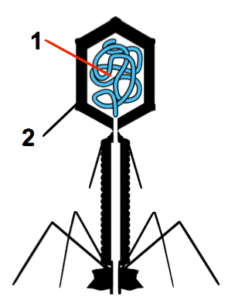
- The lytic bike
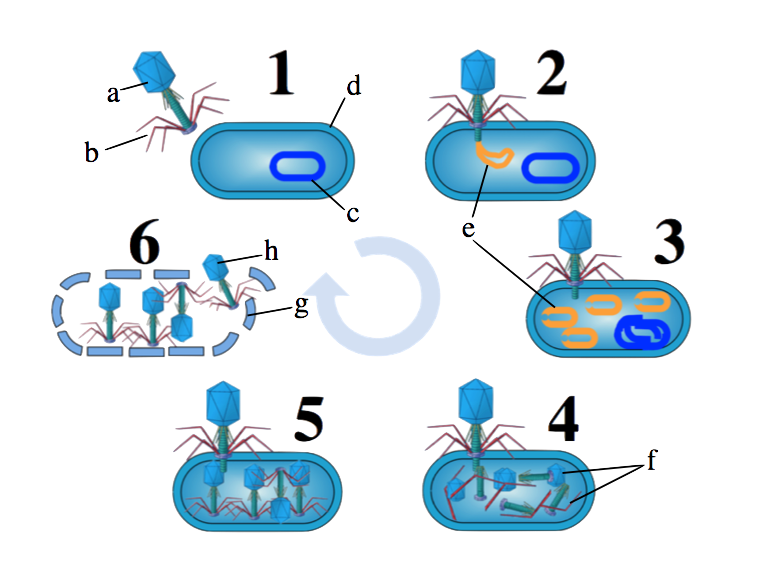
- The lysogenic cycle
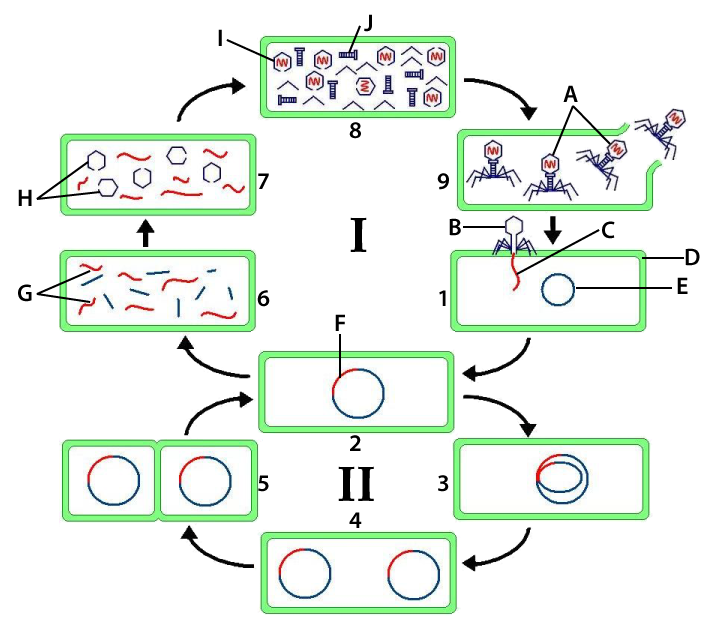
- The life bike of HIV (equally an illustrative instance of a retrovirus). This covers the learning objective from Topic six.4, higher up.
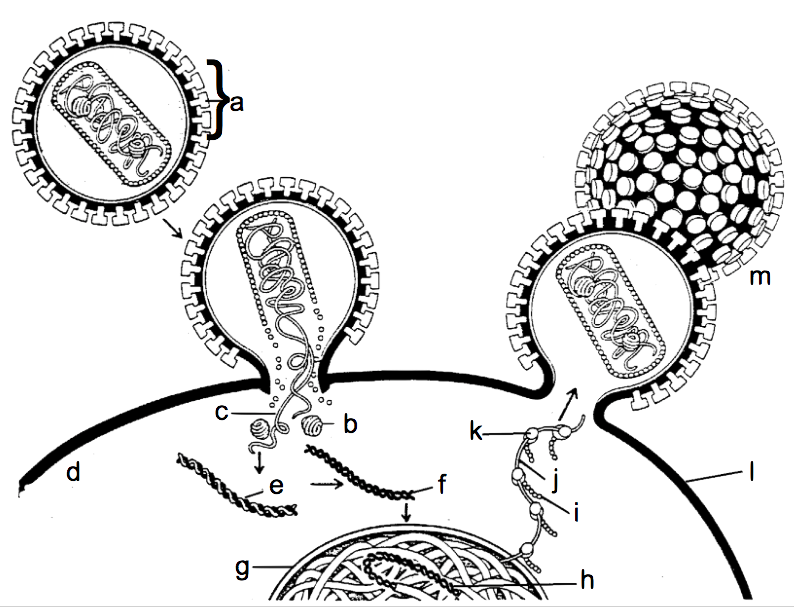
- How viruses develop their ain genetic diverseness through recombination and mutation, and how they introduce variation into other species through transduction. This covers the learning objective from Topic 6.7 above.
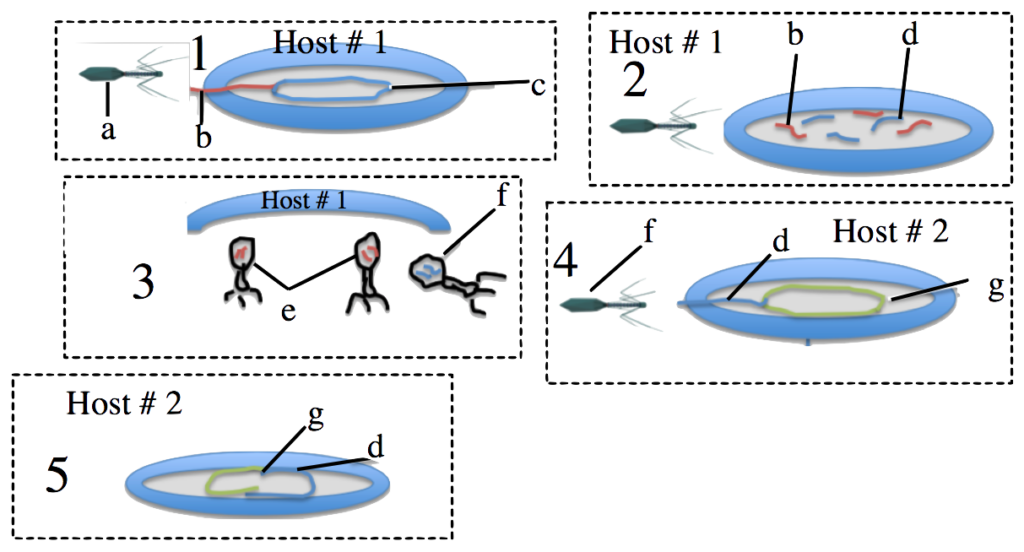
- The life cycle and overall biology of SARS-CoV-2
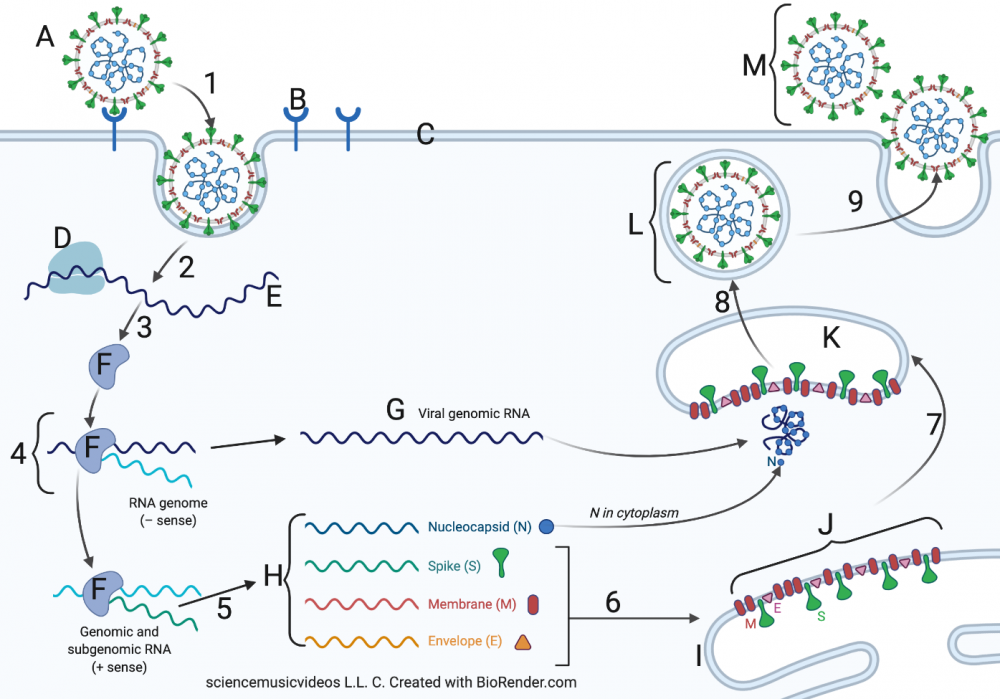
- mRNA vaccines
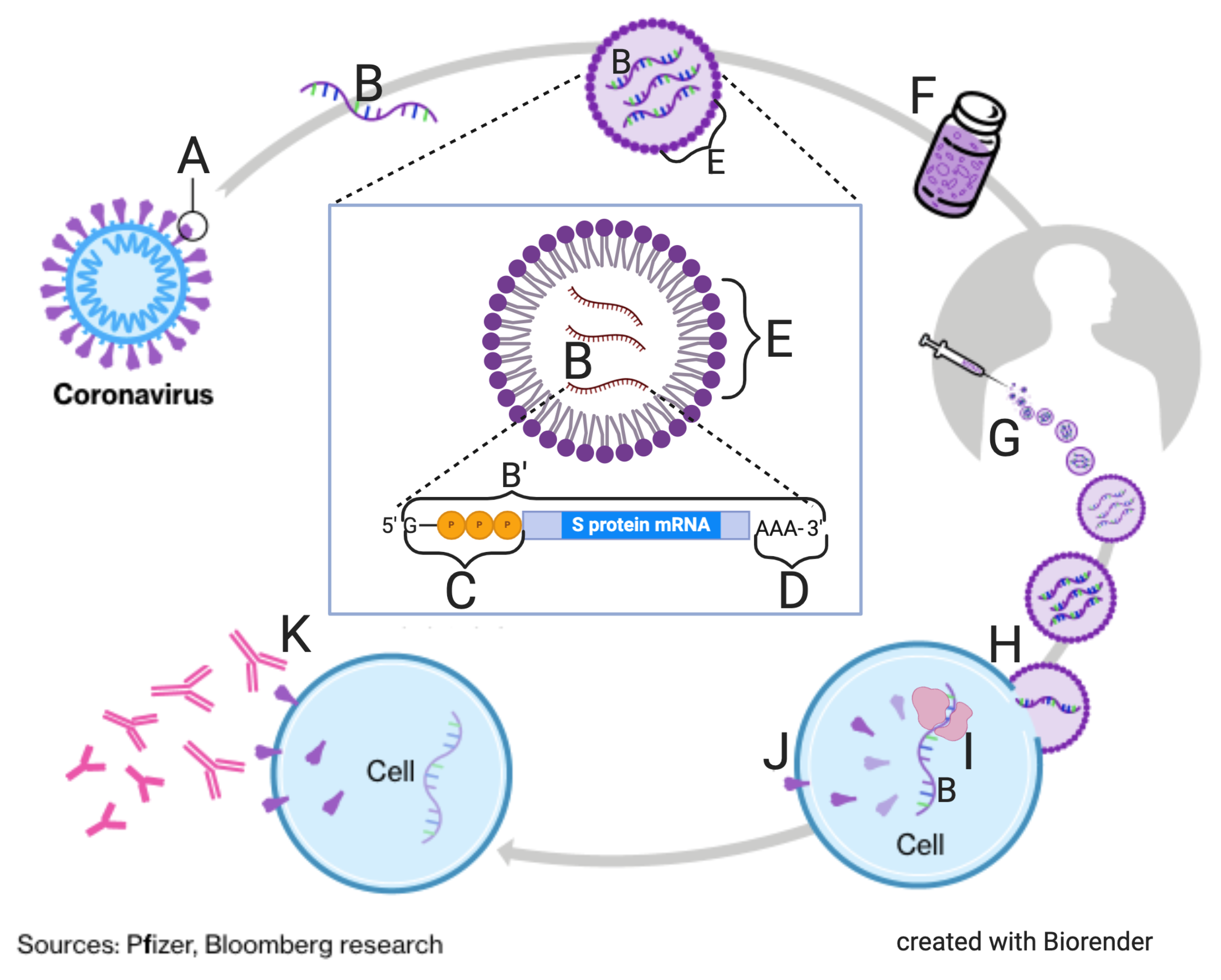
- How Rapid Antigen Tests Work
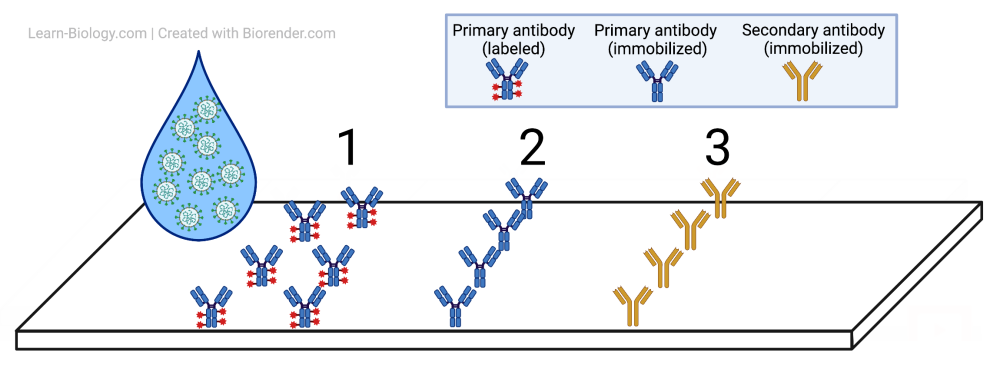
Again: I think information technology's part of our mission as biological science teachers to exist promoting understanding of the novel coronavirus, and vaccines. I hope you're on board with my battle against our common enemy Biology Defoliation.
Boosted resources
- I have a long listing of resources at the lesser of my COVID-19 Tutorial. Y'all can detect additional readings in the SARS-CoV-two section of my Recommended Readings page. Giving your students a day to do open ended research about COVID-nineteen related topics of interest and then sharing their results is a great use of course fourth dimension.
- My music video, "I'm a Virus," volition aid your students learn a lot of basic virus biology. It was written mode before COVID, merely it does include a stanza with visuals about the biology of HIV.
- Run across the day by twenty-four hours instructions higher up for the handout I use for direct instruction.
Didactics well-nigh Bacterial Genetics and Operons
In one case you've taught about mutation and viruses, you can motion onto Bacterial Genetics and Operons. The relevant learning objectives and topics are spread out in the Higher Board'due south CED, but here's a reasonable outline of what you should cover.
i. List and describe v sources of genetic multifariousness in bacteria. A successful response will include the following.
- mutation
- transformation (uptake of naked DNA),
- transduction (viral transmission of genetic data),
- conjugation (jail cell-to-jail cell transfer of DNA), and
- transposition (motility of Deoxyribonucleic acid segments inside and between DNA molecules) increment variation.
2. Operons, including
- Describe the bones construction of an operon (regulatory genes, promoters, operators, structural genes).
- Describe how operons work as a regulatory system allowing bacteria to respond in an adaptive way to their environment. This should include an clarification of
- the Lac operon (an inducible operon)
- the Trp operon (a repressible operon).
Note that both Lac and Endeavour involve negative regulation. I also include CAP and positive gene regulation equally an advanced topic.
While there's nil almost operons that'due south especially difficult — it's just ane of many beautifully complex processes that we're lucky plenty to teach — there are a few things that are important to emphasize. One thing is what Sean Carroll in The Serengeti Rules callsdouble negative logic. In the lac operon, lactose shuts down a regulatory molecule, which otherwise would shut downwards the expression of the cistron. The second thing is that the regulatory protein works through allosteric interaction with lactose. In fact, allosteric interactions, which yous probably taught back in Unit 3 when you were teaching about enzymes, was really discovered by Jacques Monod as he was figuring out how operons worked.
By the terminate of the tutorial, your students volition be able to explain what's happening in this diagram of the lac operon.

and this diagram of the trp operon
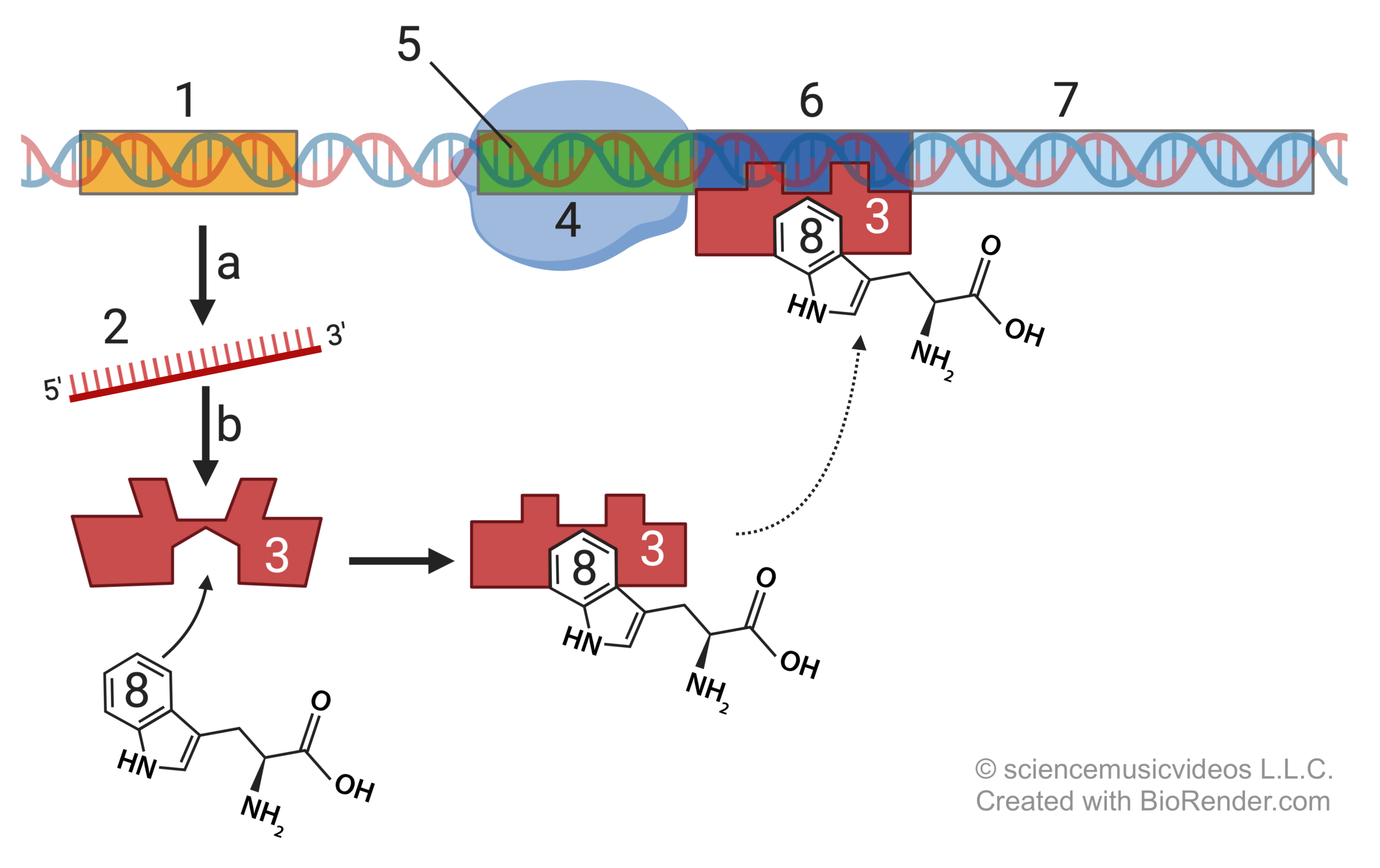
Boosted Resources
I recommend Flinn's POGIL nigh operons. Information technology'southward entitled "Control of Gene Expression in Prokaryotes." In addition in the day by day instructions to a higher place, you lot'll observe my handout for consolidating your students agreement of Bacterial Genetics and Operons.
Week 19: Biotechnology
Biotechnology
Once y'all've taught almost operons, you lot're ready to move into Biotechnology.
At Berkeley Loftier School, we spend about ii weeks doing a series of biotechnology labs that are office of the AMGEN Biotechnology Experience. This is a series of labs that walks your students through:
- brake digestion of plasmids
- gel electrophoresis
- bacterial transformation. This transformation is with a plasmid containing a cistron for crimson fluorescent protein, and an arabinose-triggered operon. If you lot've washed BioRad'south pGLO lab, this is very like (and covers the same content).
Extensions allow you lot to do
- a ligation where you actually build the plasmid
- purification of gene production.
Amgen volition train you for free, and so supply your school with all the needed supplies (consumables and hardware) for gratuitous. It's amazing professional person development for you, and a neat lab experience for your students. I can't recommend information technology highly enough.
Last year, the pandemic forced us into remote instruction. To fill up the gap, we created this video. It shows the steps of the lab (carried out by my colleagues at Berkeley High school), and explains the science of the lab (explained by me). Please feel free to use it to orient your students to some primal biotechnology techniques and concepts
Biotechnology and Genetic Technology Learning Objectives (Topic six.viii)
You'll find that what's on Learn-Biological science.com more covers what what the Higher Board, in their Class and Exam description, wants your students to know. Here'southward an edited version of these objectives.
- Explicate the apply of genetic engineering techniques in analyzing or manipulating DNA.
- Electrophoresis separates molecules according to size and accuse.
- During polymerase chain reaction (PCR), DNA fragments are amplified.
- Bacterial transformation introduces Dna into bacterial cells.
- Deoxyribonucleic acid sequencing determines the guild of nucleotides in a Dna molecule.
Biotechnology and Genetic Engineering Tutorials on Learn-Biological science.com
Here are the tutorials I've written to help your students master the primal ideas and techniques of biotechnology. Note that the starting time two tutorials lie squarely within the bounds of the AP Bio curriculum, as does the 1st half of tutorial 3 (DNA fingerprinting). Only the other tutorials in this module should be considered illustrative examples. If your students complete them (and you get over the tutorials in a way that solidifies your students understanding), yous can be sure that your students volition deeply understand Deoxyribonucleic acid, how it works, and how information technology can be manipulated.
Some of these tutorials are long. I would requite simply 1/night, so it takes about a week to make it all the manner through the module.
i. Introduction to Genetic Engineering:
Teaches your students how brake enzymes, DNA ligase, etc. tin can be used to create genetically engineered products such as insulin.
ii. PCR
A very curt tutorial well-nigh the polymerase chain reaction.
3. DNA Fingerprinting/Profiling
Teaches the basic principles of using restriction enzymes to create brake fragments, which can and so exist sorted by size through electrophoresis. The tutorial continues to explain how DNA profiling tin be done.
4. Beginning Generation Deoxyribonucleic acid Sequencing (Sanger Method)
Explains how Deoxyribonucleic acid sequencing is done. If your students empathise this, they volition truly understand how to remember critically on a molecular level about Deoxyribonucleic acid and DNA replication.
five. CRISPR-CAS9
An introduction to this revolutionary gene editing system. Jennifer Doudna, who recently won the Nobel Prize for this work, lives in Berkeley. If you lot desire your students to go to know her a flake better, yous tin can bear witness them this video of an interview I was able to do with her terminal year for a school fundraiser.
Additional Resources
If you're in a situation where you tin can do actual biotechnology in the classroom, then
- doing those activities during class time,
- assigning Learn-Biology.com for homework
- Using additional course fourth dimension to go over the lab and what's on Larn-Biology.com
will probably have the total week that'southward allotted to this topic.
If you tin't do whatever labs, then HHMI has two online simulations
- A bacterial identification lab that involves simulation PCR and electrophoresis.
- An interactive module about CRISPR CAS-nine
Week twenty: Eukaryotic Factor Regulation and Fauna Development
We'll finish unit half-dozen with two final topics: eukaryotic gene regulation and animal evolution. These are both hard topics to teach. Please get-go past skimming over the Higher Board's learning objectives. Notation that "EU" is an enduring understanding, "LO" is a learning objective, and "IST" is information storage and transfer"
Higher Lath Learning Objectives for Gene Expression and Brute Development (Topics vi.5 and half dozen.half-dozen).
If y'all similar to consult the College Lath'south learning objectives before planning instruction, here they are.
Topic 6.5: Regulation of Gene Expression
- European union IST-two: Differences in the expression of genes account for some of the phenotypic differences between organisms.
- LO IST-two.A: Describe the types of interactions that regulate cistron expression.
- IST-2.A.1: Regulatory sequences are stretches of Dna that interact with regulatory proteins to command transcription.
- IST-ii.A.2: Epigenetic changes tin can bear upon factor expression through reversible modifications of Deoxyribonucleic acid or histones.
- IST-2.A.3: The phenotype of a cell or organism is determined by the combination of genes that are expressed and the levels at which they are expressed—
- a. Observable cell differentiation results from the expression of genes for tissue-specific proteins.
- b. Consecration of transcription factors during evolution results in sequential gene expression.
- LO IST-2.B: Explain how the location of regulatory sequences relates to their function.
- IST-2.B.one: Both prokaryotes and eukaryotes have groups of genes that are coordinately regulated—
- a. In prokaryotes, groups of genes called operons are transcribed in a unmarried mRNA molecule. The lac operon is an case of an inducible system.
- b. In eukaryotes, groups of genes may exist influenced by the same transcription factors to coordinately regulate expression.
- IST-2.B.one: Both prokaryotes and eukaryotes have groups of genes that are coordinately regulated—
Topic six.vi, Gene Expression and Cell Specialization
- EU IST-2: Differences in the expression of genes business relationship for some of the phenotypic differences between organisms.
- LO IST-2.C: Explicate how the binding of transcription factors to promoter regions affects gene expression and/or the phenotype of the organism.
- IST-two.C.one: Promoters are DNA sequences upstream of the transcription start site where RNA polymerase and transcription factors bind to initiate transcription.
- IST-ii.C.2: Negative regulatory molecules inhibit gene expression by binding to DNA and blocking transcription.
- LO IST-2.D: Explain the connection between the regulation of gene expression and phenotypic differences in cells and organisms.
- IST-ii.D.1: Gene regulation results in differential gene expression and influences cell products and role.
- IST-2.D.2: Sure small RNA molecules have roles in regulating gene expression
Through two modules on Learn-Biological science.com, you lot can ensure that your students know what they need to know.
Eukaryotic Gene Regulation and Expression
This module starts with a tutorial about regulation of chromatin structure. The fundamental thing I emphasize here is how most Dna in a cell is tightly wound upwards every bit heterochromatin, and not transcribed. A small proportion, by contrast, is euchromatin, which is available for transcription. These differences correspond to chemical modifications of either Dna or the histone proteins that packet the DNA. A cardinal diagram is this 1. showing Dna methylation (6) and histone acetylation (seven):
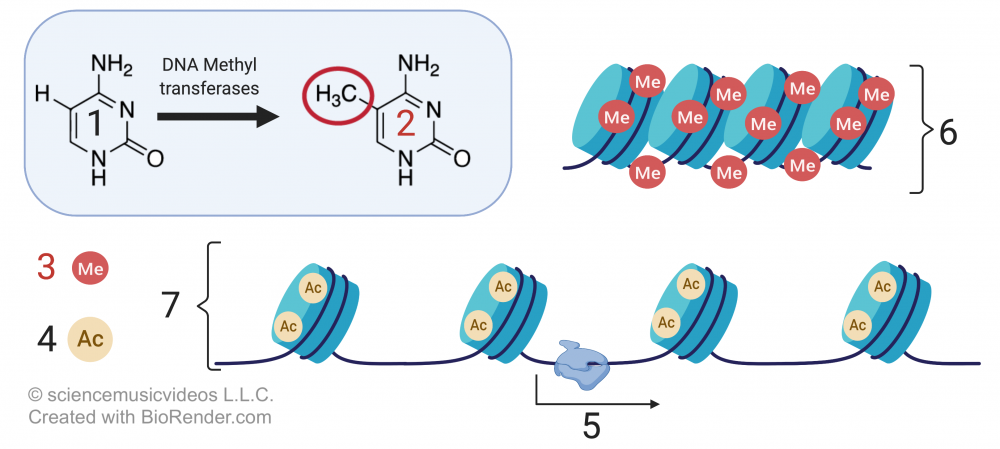
This can be pretty abstruse unless you can fold it into a story…and fortunately, nature'due south provided one. This is the story of X-chromosome inactivation, Barr Bodies, and how you lot can see that manifested in tortoiseshell cats.
By the end of the tutorial, your students will exist able to explicate diagrams like this, which show the random design of Ten inactivation and Barr torso germination that occurs early on in female person embryonic evolution…
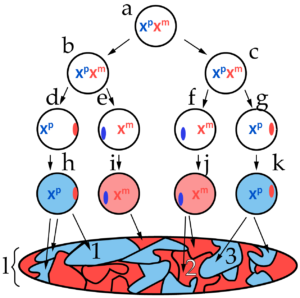
…which, with a fleck of imagination, gets you to this:

That kind of modification of Dna is a huge chunk of what epigenetics is: how modifications to DNA that don't affect sequence control gene expression. The mind-blowing stuff is the intergenerational transfer of these modifications that can occur. I embrace this through an excerpt nigh the Dutch Hunger Winter, and its intergenerational legacy.
The second tutorial focuses on regulation of transcription. In other words, for that portion of Dna that is transcribable, what determines when it gets transcribed? This focuses on the function of enhaners/regulatory switchers (at "a") which interact with regulatory molecules (at "b"), leading to the germination of transcription initiation complexes (at "j") that allow RNA polymerase to bind and transcribe DNA. These complexes wait like this:
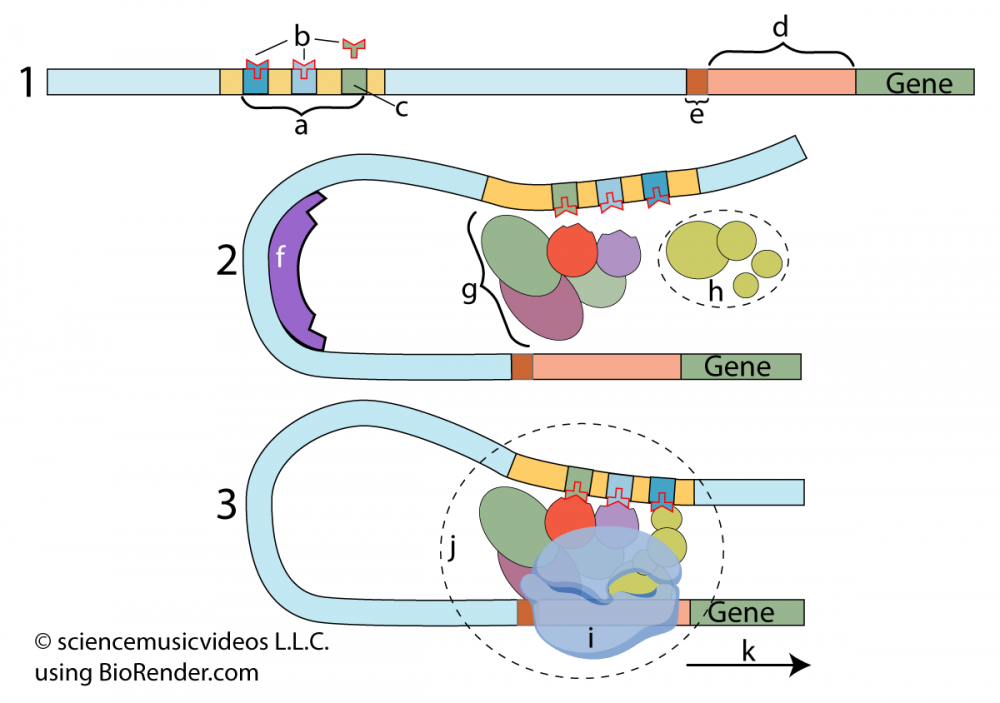
If the setup for transcription in Eukaryotes isn't complex enough, there are postal service-transcriptional modifications required before eukaryotic RNA can become mRNA that gets translated into protein.
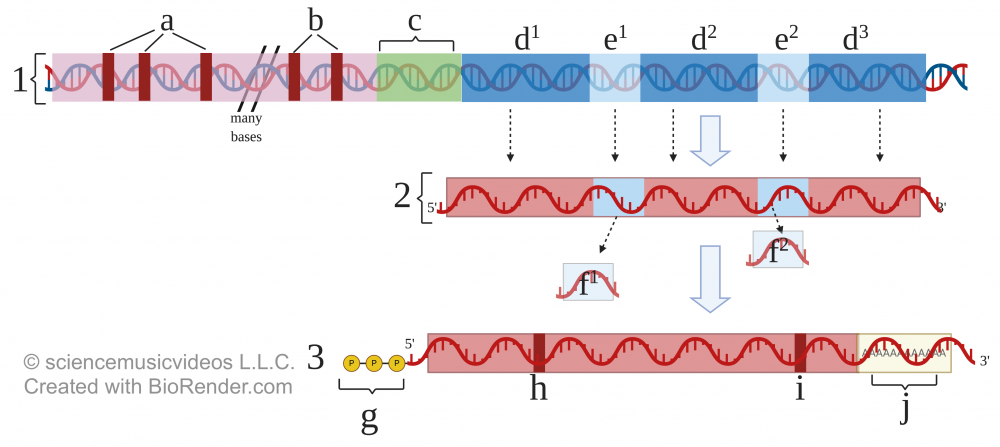
Through interacting with diagrams like the one above, students will larn nigh introns, exons, and other post-transcriptional RNA modifications.
This is very complex material, which is why it's of import that students have lots of opportunity to interact with the cloth (which is, of course, why you're sending your students to learn-biology.com).
The third tutorial looks at the intersection betwixt gene regulation and evolutionary modify, as seen in the Threespine Stickleback.
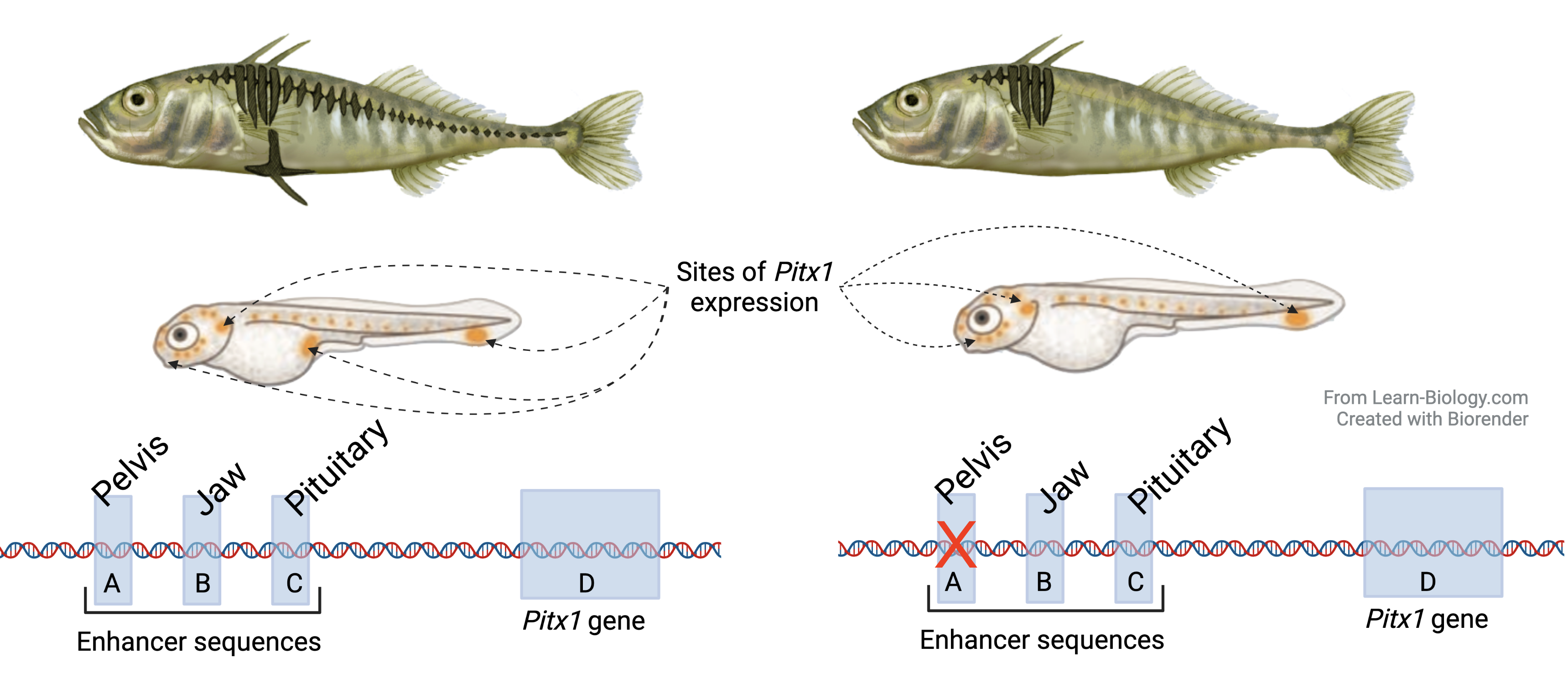
The difference between the spiny and spineless forms of these fish isn't almost the protein-coding Pitx1 gene, only upon mutations in the upstream pelvic enhancer.
Finally, in that location are post transcriptional modes of regulation and expression. This includesalternative splicing orexon shuffling, in which exons can be spliced together in dissimilar orders, essentially creating unlike proteins from the same RNA.
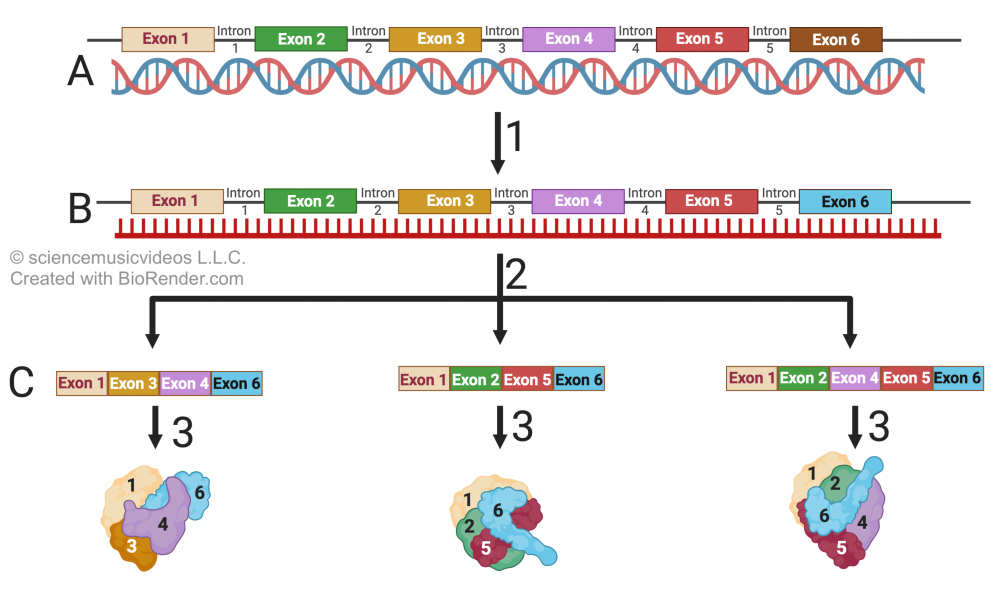
It also includes various small RNAs which interact with messenger RNA to either silence it altogether, or to interfere with its translation (a phenomenon known as RNA interference).
Animal Evolution and Cell Specialization
The second module tells 1 of the greatest stories in biology: how a fertilized egg develops into a circuitous, multicellular organism. I start past briefly introducing some of the key events in evolution: fertilization, cleavage, and gastrulation. These stages are not in the standards, but information technology felt impossible to teach the essential questions without describing the jail cell sectionalization, migration, and differentiation that happens during the beginning of any animal's life. That provides context for some of the key questions we want our students to exist focusing on:
1. how do cells know where to become?
ii. How does a cell know what type of cell information technology should develop into?
The answer to these questions are astoundingly complex. By the end of the module, your students will be able to explicate ideas similar:
Genomic equivalence: all cells accept the same Deoxyribonucleic acid. They're unlike because they express dissimilar genes
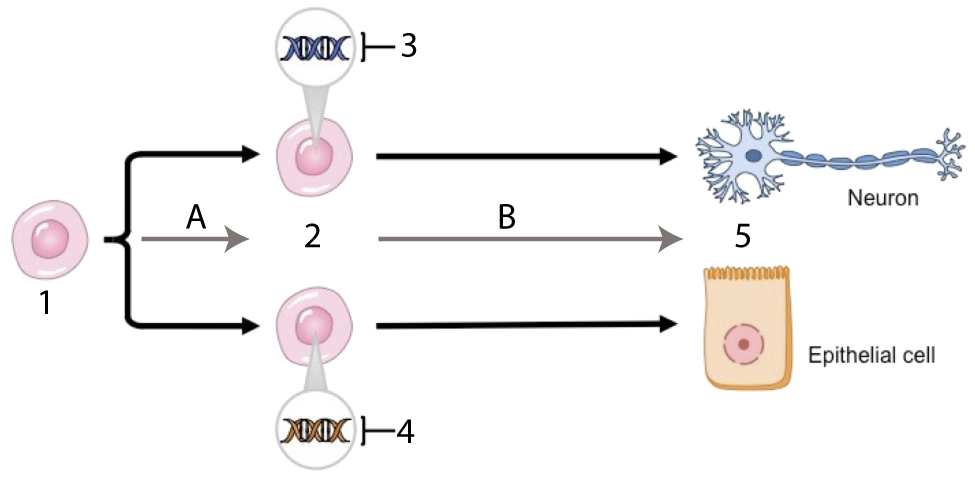
Induction: some cells release hormone-like molecules that actuate specific genes in other cells.
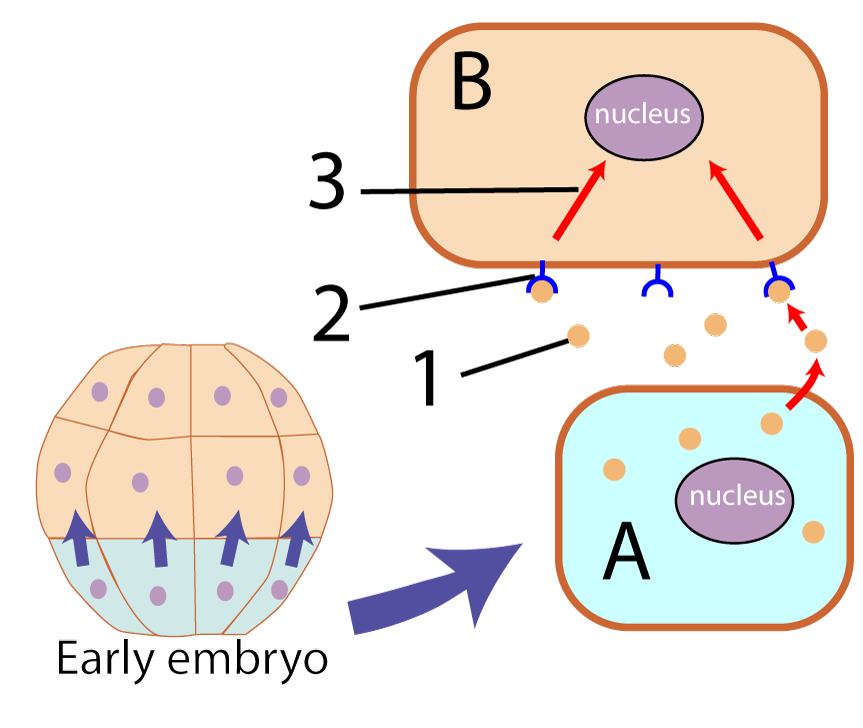
Apoptosis: timed programmed cell death is an essential function of the sculpting of form from an undifferentiated embryo
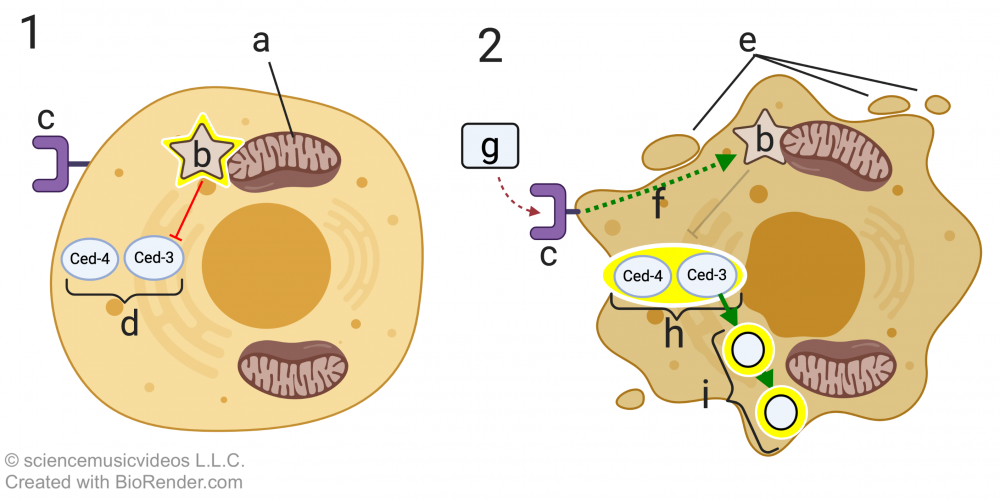
Homeotic genes: highly conserved genes that control the differentiation of torso regions.
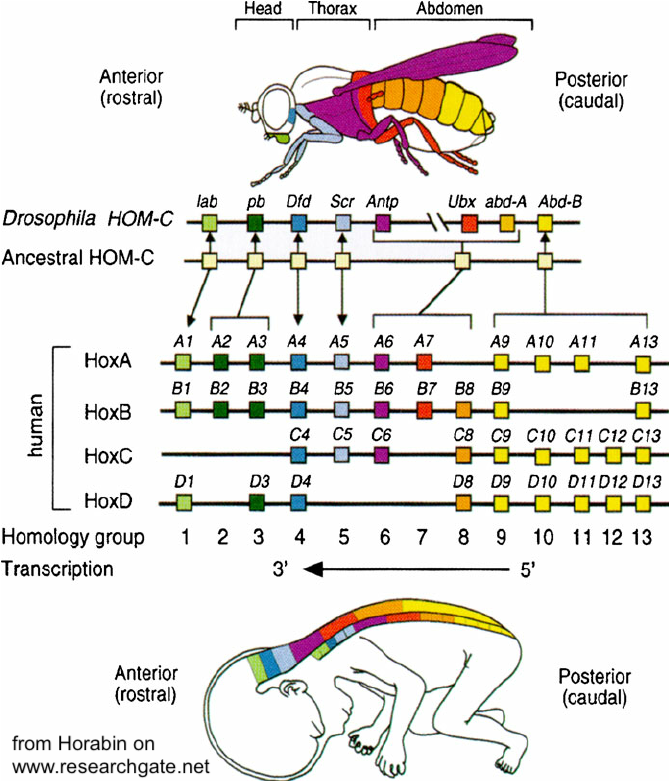
Other resources:
HHMI has a few spectacularly good activities related to the evolution and development of the threespine stickleback. Over and over again in the course of evolution, these fish, when confined to freshwater environments, have lost their pelvic spines. My 3rd tutorial in my Eukaryotic Cistron Regulation module takes the story of this fish and renders it into an interactive form.
Depending on how much fourth dimension you lot accept you can practise an unabridged virtual lab (which takes several grade periods) or watch a video and exercise one or multiple worksheets.
Become to https://www.biointeractive.org/classroom-resources, search for "stickleback" and you'll have many choices. But at the very to the lowest degree, I hope yous take your students scout the video, and exercise this worksheet.
Summative Activities for Unit vi
To pull together Unit 6
- Use the AP Bio review materials on Learn-Biology.com. Your students can access these same materials on the Biomania AP Bio app, and results from both are recorded in your teacher dashboard. These review materials include
- Unit six AP Bio Review Flashcards
- Unit 6 AP Bio Review Multiple Choice Questions
- Unit 6 AP Bio Review Gratis Response Questions
- The progress bank check questions on for Unit of measurement 6 on AP Classroom.
Links
- Unit v AP Bio Teacher's Guide (because I practise Unit of measurement 6 before Unit of measurement 5). Encounter the top of this page for why.
- Teacher's Guide Main Menu
Unit 6 Biology Study Guide,
Source: https://learn-biology.com/curriculum/teaching-ap-bio-with-learn-biology-com/unit-6-ap-bio-teachers-guide/
Posted by: abelalowely1959.blogspot.com


0 Response to "Unit 6 Biology Study Guide"
Post a Comment